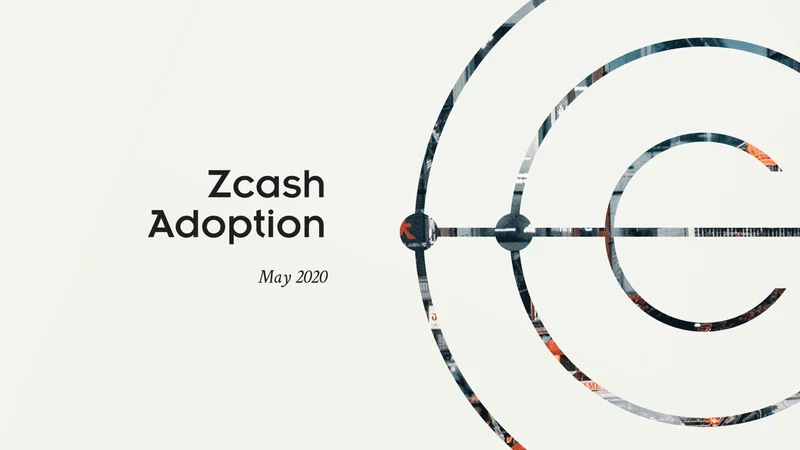Article Directory
Zcash's 520% Parabola: Is This a Breakout or a Bull Trap?
The numbers, on their face, are staggering. A 520% gain in a single month is the kind of parabolic move that creates legends and liquidates skeptics. Zcash (ZEC) hasn't just outperformed; it has defied gravity, shrugging off a broader market sell-off that erased $20 billion in leveraged positions like it was a rounding error. The narrative is compelling: in an era of increasing financial surveillance, a true privacy coin—the "invisible Bitcoin"—is finally having its moment.
But narratives don't dictate market physics. Behind the dizzying ascent and the talk of a new paradigm for function-driven blockchains, the data is telling a different, far more cautious story. The charts are flashing warning signals that are not just red, but a deep, ominous crimson. The question isn't whether Zcash has momentum; it's whether that momentum is about to drive it straight into a brick wall. And as I parse the data, the structure of this rally looks less like a sustainable breakout and more like a beautifully constructed trap.
The Anatomy of Euphoria
Let's first give the bull case its due. The technical setup is, admittedly, textbook. Traders are pointing to a classic bull flag pattern on the four-hour chart, a consolidation phase that often precedes another explosive move higher. If this pattern holds and ZEC breaks upward, the projected target sits near $336, a respectable 25% jump from current levels. The price is holding above key exponential moving averages (the 20- and 50-period EMAs), which analysts rightly interpret as a sign of underlying strength.
This technical picture is supported by a powerful fundamental narrative. The market seems to be rotating capital away from legacy names like Solana and Cardano and toward ecosystems that generate real fees, support massive transaction volumes, or, in Zcash's case, offer a unique value proposition—a trend captured in headlines like Step Aside XRP, ADA, Solana—AVAX, ZEC And This 'Ethereum Killer' Are The New Outperformers. Privacy is a potent driver. In a world where every transaction is scrutinized, the demand for encrypted, untraceable value transfer is a logical tailwind.
This is the story that gets told on social media and in trading channels. It’s clean, simple, and forward-looking. But it conveniently ignores the metrics that measure market stress and historical precedent. And this is the part of the analysis that I find genuinely concerning, because the numbers suggest the engine is overheating to a degree we've never seen before.

The Gravity of the Data
The single most important metric in this entire situation is Zcash’s weekly Relative Strength Index (RSI). As of this week, it registered a value above 92. To be clear, this is not just high; it is the highest level on record for the asset. An RSI is essentially a momentum gauge, and a reading this far into "overbought" territory is like seeing the tachometer on a race car buried deep in the red, shaking violently. It doesn't mean the engine will blow this exact second, but it strongly suggests that a catastrophic failure is statistically probable.
For context, the last time ZEC’s weekly RSI peaked was in April 2021, when it hit 78. What followed that reading? A price collapse of nearly 70%—to be more precise, a 68.8% drawdown over the next few months. Today’s RSI isn’t just a little higher than that 2021 peak; it's in an entirely different stratosphere. Is the current privacy narrative so fundamentally powerful that it can invalidate one of the most reliable indicators of market exhaustion? Or are we simply witnessing a more extreme version of the same cyclical euphoria?
This risk is compounded by the on-chain liquidation data. The chart from CoinGlass shows a significant cluster of long liquidations stacked right around the $244 level. This isn't just a technical support line; it's a financial tripwire. About $5.36 million in leveraged long positions are set to be forcibly closed if the price dips below that threshold. Think of it as a line of dominoes. A small push below $244 could trigger a cascade of automated selling, pushing the price down toward the next major support level, the 50-period EMA, which currently sits around $210. The very structure that propelled the price up—leverage—has created the mechanism for its rapid collapse.
You can almost feel the tension in the air, the low hum of servers waiting for the price to touch that magic number. A gravestone Doji candle—a tiny, ominous-looking cross—has already formed near the recent highs, signaling indecision and a potential reversal. While bulls are looking up at the $336 target, the more immediate and mathematically significant threat lies just a few percentage points below.
The Math Always Wins
So, what's the verdict? The Zcash rally is a fascinating case study in the battle between a powerful narrative and cold, hard data. The story of a privacy-focused "invisible Bitcoin" is compelling, and the market's rotation toward utility is a healthy long-term trend. But in the short-to-medium term, an asset cannot defy the laws of financial gravity indefinitely. A record-high weekly RSI, a historical precedent for a 70% crash from a much lower peak, and a precarious stack of liquidations acting as rocket fuel for a potential downturn—these are not data points you can ignore. The bull flag may be a siren's song, luring traders into a final, euphoric trap before the inevitable correction. Because in the end, narratives fade, but the math always, always wins.
